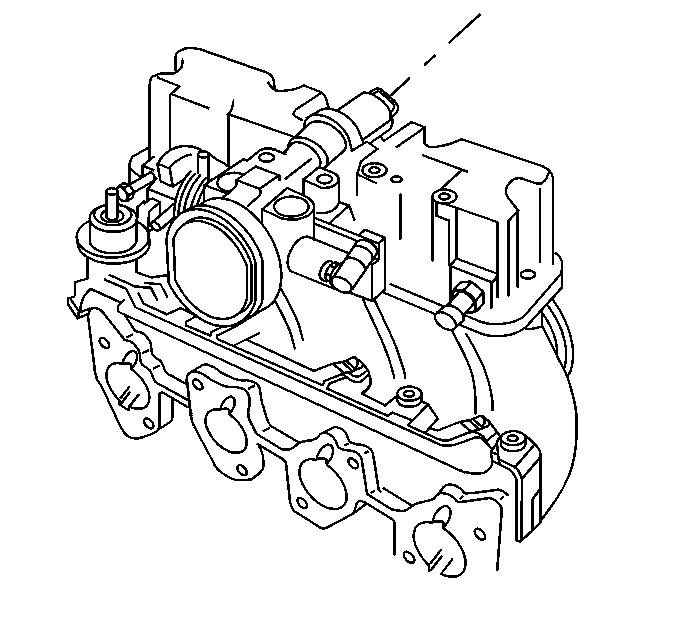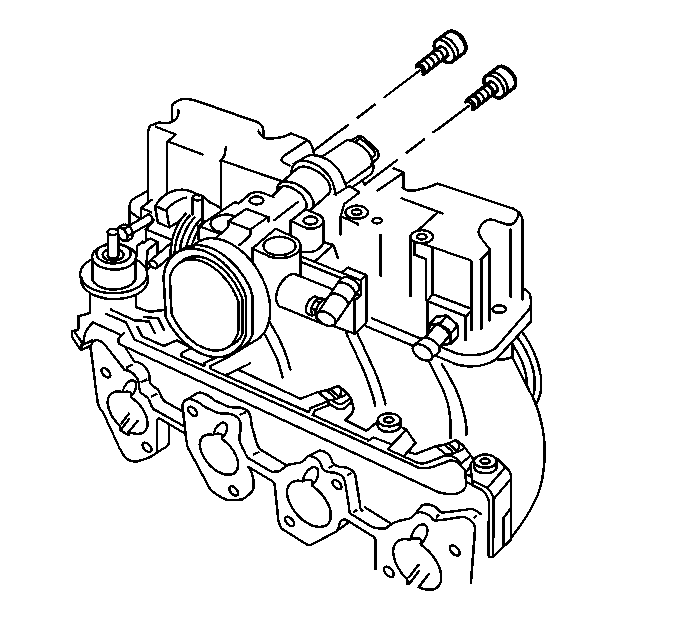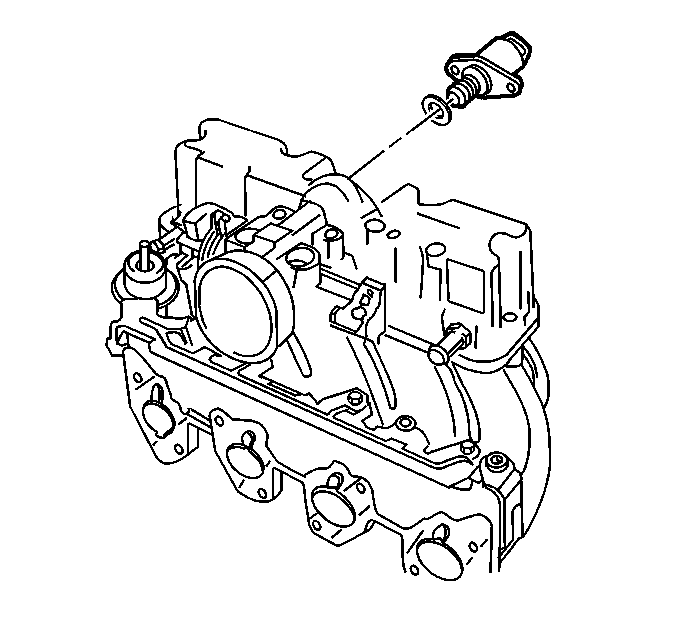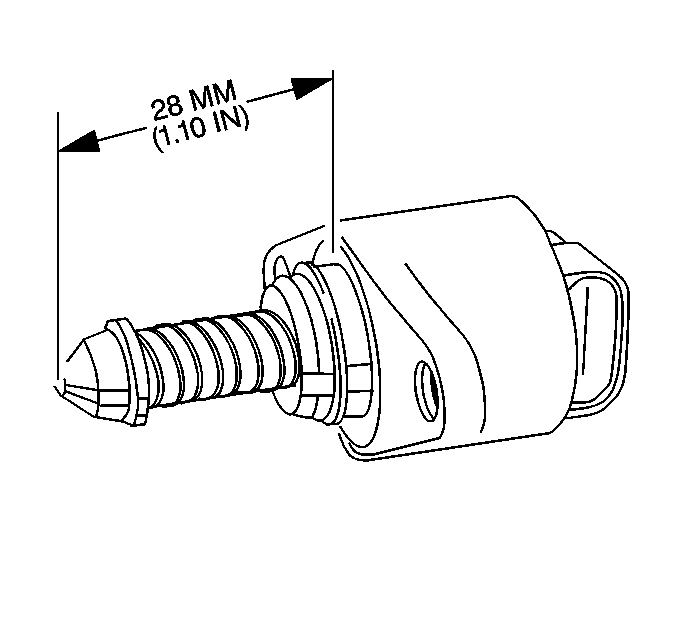Removal Procedure
- Remove the electrical connector.
- Remove the IAC valve attaching screws.
- Remove the IAC valve assembly.



Thread Locking Material
Important: The hardware used to attach the upper manifold Throttle Position (TP) sensor, Idle Air Control (IAC) valve, MAP sensor, power brake fitting, and the lower manifold pressure regulator and injector bracket attaching hardware are coated with thread-locking adhesive. If any these parts are removed for service, inspect the attaching screw threads. There should be enough thread-locking material (adhesive or compound) on the threads to ensure proper relocking. If not, clean the threads and apply a thread locking adhesive to the threads before reassembly. Replacement screws are included in the service screw assortment package. New attaching hardware is included in the service packages.
Cleaning and Inspection Procedure
Notice: If the IAC valve has been in service: DO NOT push or pull on the IAC valve pintle. The force required to move the pintle may damage the threads on the worm drive. Also, DO NOT soak the IAC valve in any liquid cleaner or solvent, as damage may result.
| • | Clean IAC valve O-ring sealing surface, pintle valve seat, and air passage. |
| - | Use a carburetor cleaner and a parts cleaning brush in order to remove the carbon deposits. Do not use a cleaner containing methyl ethyl ketone. |
| - | Shiny spots on the pintle or seat are normal. They do not indicate misalignment or a bent pintle shaft. |
| - | If the air passage has heavy deposits, remove the upper manifold assembly for complete cleaning. |
| • | Inspect the IAC valve O-ring for cuts, cracks, or distortion. Replace if damaged. |
Measurement Procedure
This procedure is only for installing a new IAC Valve
Important: If installing a new IAC valve, replace the IAC valve with an identical part. The IAC valve pintle shape and diameter are designed for the specific application.

Measure the distance between tip of IAC valve pintle and mounting flange.
If greater than 28 mm, use finger pressure to slowly retract the pintle. The force required to retract the pintle of a new valve will not cause damage to the valve.
Installation Procedure
- Lubricate IAC valve O-ring with clean engine oil.
- Install the IAC valve assembly.
- Install the attaching screws coated with appropriate thread-locking material. Refer to Thread Locking Material below.
- Install the electrical connector.
- Reset the IAC valve pintle position:


Tighten
Tighten the IAC Valve assembly screws to 3.0 N·m (27 lb in)
Caution: Unless directed otherwise, the ignition and start switch must be in the OFF or LOCK position, and all electrical loads must be OFF before servicing any electrical component. Disconnect the negative battery cable to prevent an electrical spark should a tool or equipment come in contact with an exposed electrical terminal. Failure to follow these precautions may result in personal injury and/or damage to the vehicle or its components.

| 5.1. | Turn the ignition switch to the ON position (engine OFF). |
| 5.2. | Turn the ignition OFF for ten seconds. |
| 5.3. | Start the engine and check for proper idle operation. |
